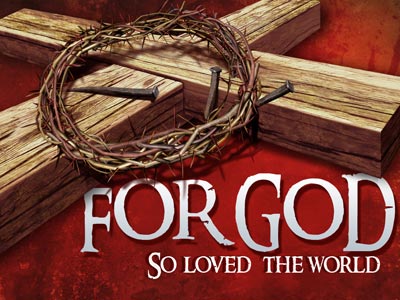-
The Theology Of The Cross
Contributed by Rev. Duraimony Dickson on Mar 27, 2021 (message contributor)
Summary: God works under opposites in order to help mature us in our faith so that we might appreciate even more the miracle of His love. And that love is truly miraculous.
The Theology of the Cross
God sometimes does not work in the ways which we would expect our God to work. Sometimes, He does not always give us what we want. Sometimes, there are moments in our life where God seems so far away. We pray to Him and nothing happens. We look at God to intervene in our world. Yet the hungry, the poor, and the oppressed are still with us. Where is God? Have you ever asked this question?
What kind of a God do we serve? Our Bible lessons for today, Palm Sunday, will give us insight into this question. You see, we serve a God who sometimes works through contrasts, or opposites. There is an Old Testament scripture lesson that is very relevant to this point. God says this about Himself. He says: "See now that I, even I, am he, and there is no god beside me; I kill and I make alive; I wound and I heal ... (Deuteronomy 32:39)."
God, Yahweh, offers here an unmistakable testimony to the fact that he works through opposites. It is part of His wonder that God does not do the things we would expect. He does not always give us what we want, but He always gives us what we need. It is all because we have a God who works through contrasts - who kills in order to make things alive and new; who wounds in order to heal.
God tends to work through opposites. This is shown from a lesson in Philippians. In that text, Paul outlines how God revealed Himself and His purposes through His Son. The eternal and divine Son of God, though in the form of God, "emptied himself, taking the form of a servant," and was born in the likeness of man (Philippians 2:6-7). Paul then proceeds to make another point about the Son: "And being found in human form he humbled himself and became obedient unto death, even death on a cross (Philippians 2:8)."
God works through lowly, ordinary things. The eternal, holy, omnipotent God became a lowly, ordinary man and even experienced the humiliation of death on a cross. Yet through such lowly means, God achieves the opposite of lowliness. Christ is exalted! Thus Paul writes about the Son's death on a cross. Then he adds: "Therefore God has highly exalted him [Jesus Christ] and bestowed on him the name which is above every name, that at the name of Jesus every knee should bow, in heaven and on earth and under the earth, and every tongue confess that Jesus Christ is Lord, to the glory of God the Father (Philippians 2:9-11)." God works through contraries or opposing means in order to achieve His glorious ending.
We observe the same clarity on Palm Sunday. In our gospel lesson, we see the King, the Lord Jesus, God himself coming to Jerusalem. Yet He comes "Behold, your King is coming to you, Lowly, and sitting on a donkey, A colt, the foal of a donkey (Matthew 21:5; John 12:15; Isaiah 62:11; Zechariah 9:9)." The glory of God on a humble donkey. It is an illustration of contrasts.
The crowd of disciples and followers of Jesus cheered for Him wildly on that first Palm Sunday. They treated Him like a king. Yet they had such fickle hearts. For just five days later, they deserted Him, and some even shouted, "Let him be crucified (Matthew 27:23)." This is again, an illustration of contrasts and opposites. We call this pattern in God's behavior the theology of the cross.
Of course, we know the final act in the drama. The Jewish and Roman leaders put Jesus on that cross. But Jesus conquered death! Jesus came back to life! His death made it possible for others who have died to come back to life (see 1 Corinthians 15:21). His death gave us life! Death equals life, which is again another contrast.
It is on the cross that the contrasts are the most stunning. For on the cross we see God using death to give life. That is why the cross is the symbol of Christianity. That is why we call God's pattern of working through contrasts and opposites as “the theology of the cross”.
Palm Sunday and “the theology of the cross” both answer the question: What kind of God do we serve? For God is a God who, because he works through contrasts and opposites, works in hidden ways. That is why at times it may feel like our prayers are unanswered. It is because He is working in hidden ways. Just like on the cross, He gave us life in a hidden way. Not the way WE expect it, but the way God knows we NEED it.
Martin Luther often spoke of this aspect of “the theology of the cross” and about how God works in hidden ways. In a series of lectures Luther gave in 1515 and 1516, in the Book of Romans, he wrote: "For what is good for us is hidden, and that so deeply that it is hidden under its opposite. Thus our life is hidden under death, love for ourselves under hate for ourselves ... salvation under damnation, heaven under hell ... And universally our every assertion of anything good is hidden under the denial of it, so that faith may have its place in God, who is a negative essence and goodness and wisdom and righteousness, who cannot be touched except by the negation of all our affirmations."

 Sermon Central
Sermon Central



